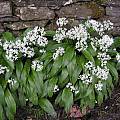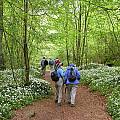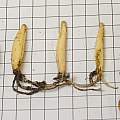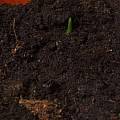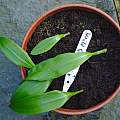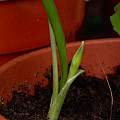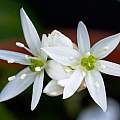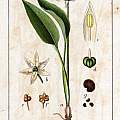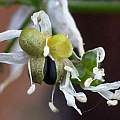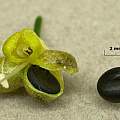Allium ursinum L. is found in damp woods in Europe where it blooms in spring and when it grows in large numbers, which it often does, there is a powerful onion smell when you pass by. It has dark green large leaves and white star-shaped glistening flowers. It is commonly known as wild garlic, ramsons (from ancient English hramsa), buckrams, wood garlic, bear leek or bear garlic. The Latin name derives from the bulbs being eaten by bears. All parts of the plant are edible but it is often mistaken for the poisonous Convallaria majalis L. (lily-of-the-valley). Height: 15-50 cm. The first picture was taken by Bob Rutemoeller in May 2004 in Cornwall. It was growing in front of a wall all along the road. The second picture taken in Aberfeldy, Scotland, in May 2004 by Bob Rutemoeller shows it growing along a trail we were hiking on. There was a definite odor of onions in the air.
In photographs below by David Pilling, the first shows commercially supplied bulbs on a 10 mm grid; photos 2-4 show the resulting shoots emerging in early February, leaves, then flower bud mid March. Photo 5 highlights the flowers with the classic Allium design. The last is an illustration from Deutschlands Flora in Abbildungen, Johann Georg Sturm, 1796 (Bären-lauch == bear leek).
Photographs of seed.
